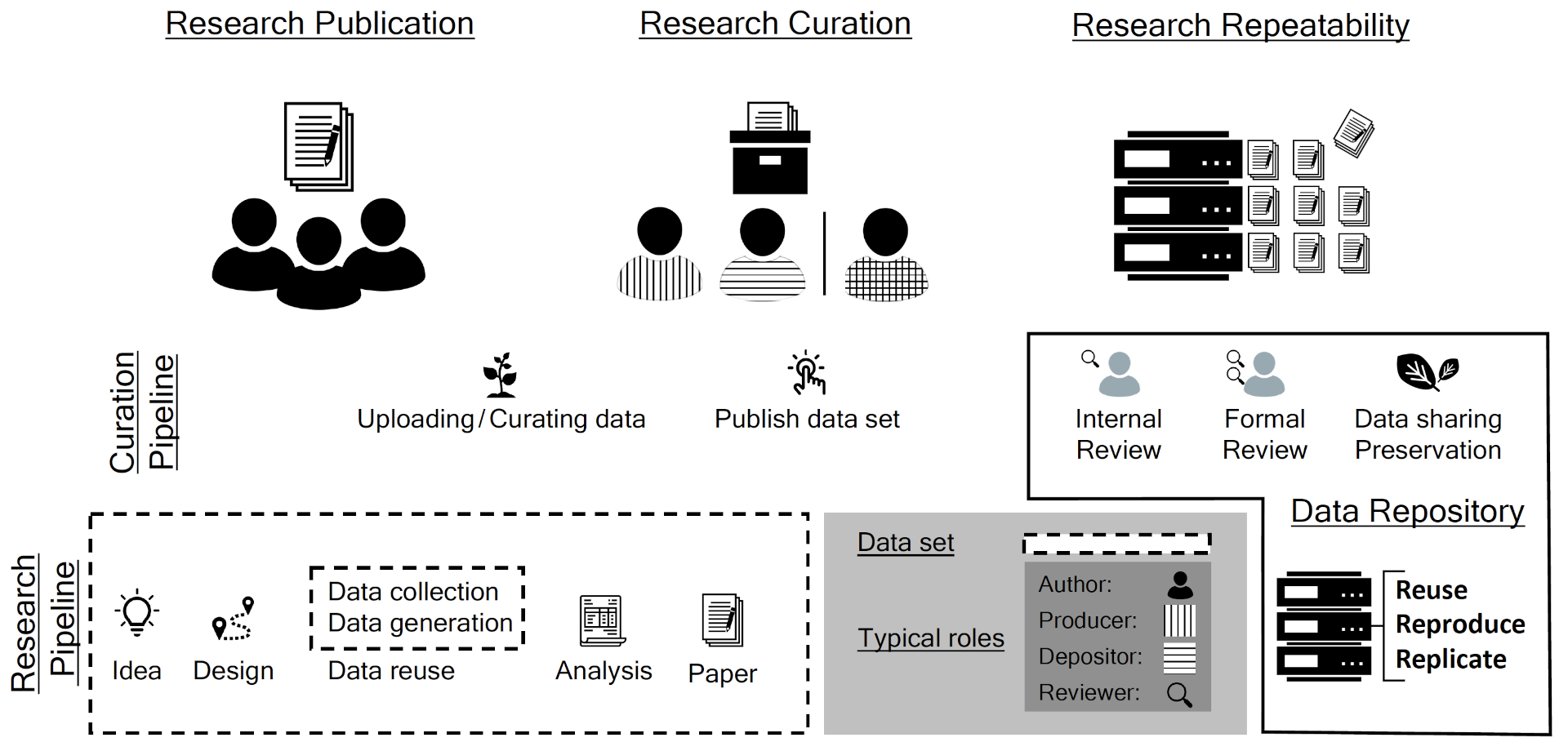Research Data Curation in Visualization
Dimitar Garkov, Christoph Müller, Matthias Braun, Daniel Weiskopf, Falk Schreiber
View presentation:2022-10-17T19:15:00ZGMT-0600Change your timezone on the schedule page
2022-10-17T19:15:00Z

The live footage of the talk, including the Q&A, can be viewed on the session page, BELIV: Paper Session 2.
Abstract
Research data curation is the act of carefully preparing research data and artifacts for sharing and long-term preservation. Research data management is centrally implemented and formally defined in a data management plan to enable data curation. In tandem, data curation and management facilitate research repeatability. In contrast to other research fields, data curation and management in visualization are not yet part of the researcher's compendium. In this position paper, we discuss the unique challenges visualization faces and propose how data curation can be practically realized. We share eight lessons learned in managing data in two large research consortia, outline the larger curation workflow, and define the typical roles. We complement our lessons with minimum criteria for selecting a suitable data repository and five challenging scenarios that occur in practice. We conclude with a vision of how the visualization research community can pave the way for new curation standards.